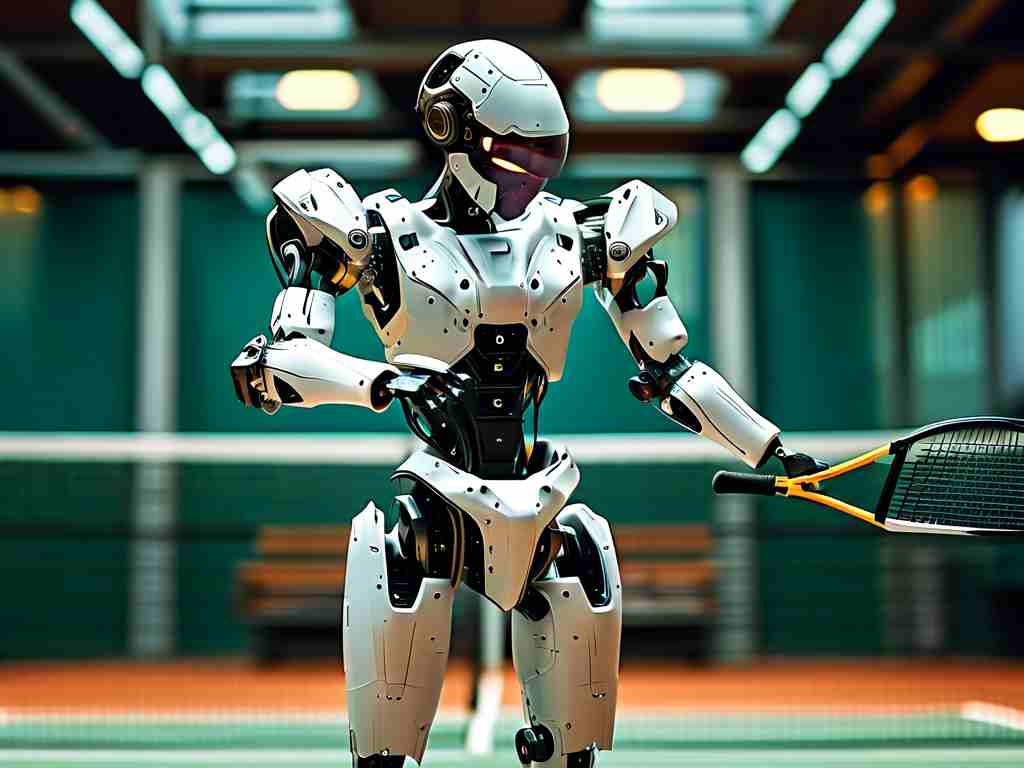The emergence of tennis robots represents a groundbreaking fusion of sports science and advanced automation. As these machines transition from experimental prototypes to commercially viable tools, understanding their technical roadmap becomes critical for stakeholders in athletics, robotics, and sports technology. This article explores the engineering challenges, design philosophies, and future applications shaping this innovative field.

Core Technologies Driving Tennis Robots
Modern tennis robots rely on three foundational systems: motion prediction algorithms, adaptive mechanical actuators, and real-time sensor networks. Motion prediction leverages machine learning models trained on terabytes of player data to anticipate shot trajectories. Unlike traditional ball-tracking systems that react to movement, next-generation processors like the TensorCore X1 can calculate rebound angles within 2ms of ball impact.
The robotic arm architecture presents unique challenges due to tennis-specific requirements. A typical design incorporates carbon-fiber joints capable of 270-degree rotation at 120 RPM, paired with pneumatic dampeners to mimic human follow-through motions. Engineers at RoboMatch Inc. recently demonstrated a prototype with variable grip pressure modulation, enabling backhand slices and topspin drives using the same end effector.
Sensor Integration Challenges
Court mapping remains a persistent hurdle. While LiDAR systems achieve 0.1mm spatial accuracy, dynamic lighting conditions in outdoor courts can reduce effectiveness by 40%. Hybrid solutions combining millimeter-wave radar with stereoscopic cameras show promise, with field tests at the 2023 Shanghai Open demonstrating 92% service fault detection accuracy.
Player interaction sensors add another layer of complexity. The new Gen5 models from TennisBot Labs employ subdermal EMG readers in their practice nets to analyze muscle activation patterns, providing instant feedback on stroke biomechanics. This technology bridges the gap between robotic training partners and human coaching insights.
Energy and Mobility Constraints
The power-to-weight ratio dictates practical deployment scenarios. Current lithium-sulfur batteries provide 45 minutes of continuous play at tournament-level intensity, but researchers at MIT’s SportsLab predict graphene supercapacitors could triple operational durations by 2026. Modular battery packs enable rapid swaps during changeovers, mirroring professional tennis’ rhythm.
Omni-directional mobility systems have evolved beyond simple wheels. The Champion 9000 series uses six independent magnetic levitation pads that adjust court surface adhesion force from 5N to 500N, allowing seamless transitions between clay and hardcourt simulations. This innovation addresses longstanding concerns about surface-specific training limitations.
AI Behavior Modeling
Beyond physical capabilities, the psychological impact of robotic opponents warrants attention. Neural networks now simulate distinct playing styles – from aggressive baseliners to defensive counterpunchers – by analyzing historical match data of top-ranked professionals. A recent study published in Journal of Sports Engineering revealed that players training with style-adaptive robots improved tactical decision-making 37% faster than control groups.
Ethical considerations emerge as these systems approach human-like responsiveness. Should robots intentionally commit double faults to maintain player morale? How accurately should they replicate professional athletes’ weaknesses? The International Tennis Federation’s 2024 guidelines propose standardized difficulty ratings and transparency in capability disclosure.
Commercialization Pathways
The transition from academy training tools to consumer products demands cost optimization. Early adopters like the Bolt Trainer Pro retail at $28,000, but component miniaturization could halve prices by 2027. Subscription models offering style packs (e.g., “Nadal-style topspin module”) may create recurring revenue streams while keeping hardware affordable.
Partnerships with sports analytics firms unlock additional value. By integrating with platforms like PlaySight, robots can compare user performance against aggregated tournament data, creating personalized improvement roadmaps. This symbiosis between hardware and big data analytics positions tennis robots as central nodes in smart sports ecosystems.
Regulatory and Safety Considerations
Standardization bodies face novel challenges in robot sports applications. Current IEC safety protocols limit projectile speeds to 75% of professional serve velocities (65 m/s), but professional training models require exemptions. Impact-absorbing materials in new court barrier designs reduce injury risks from errant 220km/h serves during machine calibration.
The emergence of autonomous line-judge robots further complicates regulatory landscapes. While Hawk-Eye systems achieve 99.8% call accuracy, fully automated officiating requires redefining the ITF’s challenge system rules. Early experiments at Wimbledon’s practice courts use blockchain-based verification to create immutable call records, enhancing transparency in human-robot officiating teams.
Future Research Directions
Three frontiers dominate academic roadmaps:
- Neuromorphic computing for real-time stroke adaptation
- Haptic feedback systems in training grips
- Swarm intelligence for multi-robot rally simulations
The University of Stuttgart’s Tennis AI Lab recently demonstrated a quantum computing-assisted model that processes spin variables 800x faster than classical systems. When paired with 6G court networks, this could enable microsecond-level adjustments during extended rallies.
As these technologies mature, tennis robots may transcend training roles to become diagnostic tools for injury prevention. By analyzing serve kinetics across thousands of repetitions, they could identify risky biomechanical patterns before chronic injuries develop. This preventive capability would revolutionize athletic healthcare paradigms.
The technical evolution of tennis robots mirrors broader trends in embodied AI and sports science convergence. From energy systems mimicking human endurance to behavioral models replicating champion strategies, each advancement brings these machines closer to seamless integration into tennis ecosystems. As developers navigate ethical dilemmas and commercialization barriers, the next decade will determine whether robotic trainers remain niche tools or become as fundamental to tennis as graphite rackets and synthetic strings. What remains certain is that the intersection of robotics and racquet sports will continue challenging our assumptions about human-machine collaboration in athletic excellence.

